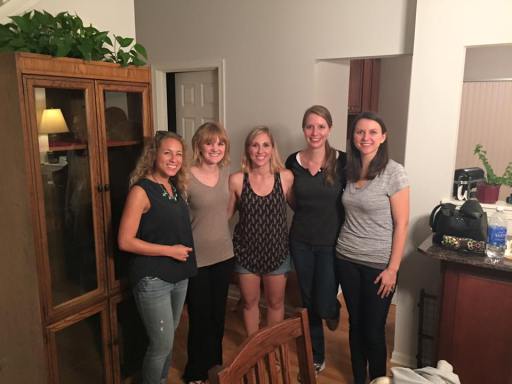Last January I decided that instead of making resolutions I would just choose one word to focus on for the year. A single word that summed up how I wanted to grow during 2015. I chose the word “wholehearted.” I wrote that:
Wholeheartedness is about sincerity and commitment. For me this means authenticity in my life and my writing. It means commitment to continue my faith-wrestling and to asking sincere questions. Being Wholehearted is also a commitment to courage, compassion, and connection. It is the courage to be vulnerable despite the risk, the compassion to love other people well and to extend grace quickly, both to myself and to others, and the choice to develop genuine connections with others. Wholeheartedness means committing to being fully present, to showing up for every day of my life instead of checking out when things are hard or boring. It means engaging with Today and believing that every day is a gift. And Wholehearted means believing that I am worthy of love and belonging – not because there is anything especially great and deserving about me, but because we are all worthy of love and belonging and because we can’t fully accept love and belonging unless we believe we are worthy of it.
My journey with wholeheartedness isn’t over, but I can honestly say that I think I can see where I’ve grown in these areas. I have taken more risks in trying to connect with people and I have learned to be kinder to myself. I have also failed in some of these areas, and that’s OK too. Choosing one word for the year was never about mastering a particular virtue. It was simply about setting my intentions.
Just before we left Korea in August, I got a new tattoo. It wasn’t something I posted to Instagram or Facebook and I didn’t tell many people about it at the time. It wasn’t meant to be a secret, but it also wasn’t something I wanted to hear a lot of conflicting opinions on or make a big deal about. I wasn’t getting it because tattoos are trendy or because I wanted other people to think I was cooler than I really am. I wanted a symbol of my time in Korea and my journey towards wholeheartedness that would stay with me forever.
I know that tattoos are not everyone’s cup of tea and if you don’t like them, that’s totally fine. There are certainly plenty of people who get tattoos that they later regret. But for me, my tattoos are physical marks of my own story. They remind me of where I’ve been and of the places in my life where God has broken through. I like the permanence of them – the sense that in a world where everything is always changing, these things will always be true and constant.
This tattoo is a compass inside of a mandala. The mandala is a traditional Hindu or Buddhist pattern symbolizing wholeness and unity in the universe. The intricate dot-work shading and the symmetry in the pattern are meant to point to the order in the universe and to our smallness in relation to the greater pattern. I had the compass placed into the middle as a reminder of this time spent living abroad and also that my life has direction. And while these really are meanings I thought about before having this piece done, I also chose it because I think it’s beautiful and I believe that’s a worthwhile reason in itself.

This was when it was freshly done.

And this is what it looks like now that it’s healed.
I chose the placement on my leg partly because it was a big enough area to handle a larger piece like this and partly because it’s relatively easy to cover. It shows when I wear shorts or a swimsuit, but it naturally covered by pants or dress clothes so its no hassle for a more formal setting. I was hesitant about putting it on my thigh which has long been my least favorite part of my body. I wasn’t sure I wanted to call attention to the part of me that I am most self-conscious about. But then I thought, “Why not put something beautiful on this part of you that you don’t think is beautiful?” And the cool thing is, since getting my tattoo it’s become one of my favorite parts of myself. I feel so much more confident and beautiful even if the rest of my legs still jiggle like Jell-O.

This was also the day I got it. I had my shorts rolled up so they wouldn’t irritate it, but normally my shorts fall right to the middle of the tattoo.

This is the only picture I can find where you can sort of see where it falls with my regular shorts on. It’s just barely showing here.
2015 is drawing to a close, but my journey towards wholeheartedness will continue into next year and on through the rest of my life.
___________________________________________________
My tattoo is a beautiful, one of a kind piece that was designed for me by an artist in Busan, South Korea. In other words, don’t go get my exact tattoo somewhere on you! Most artists are happy to design something unique for you – they don’t want to just copy other people’s work either.


